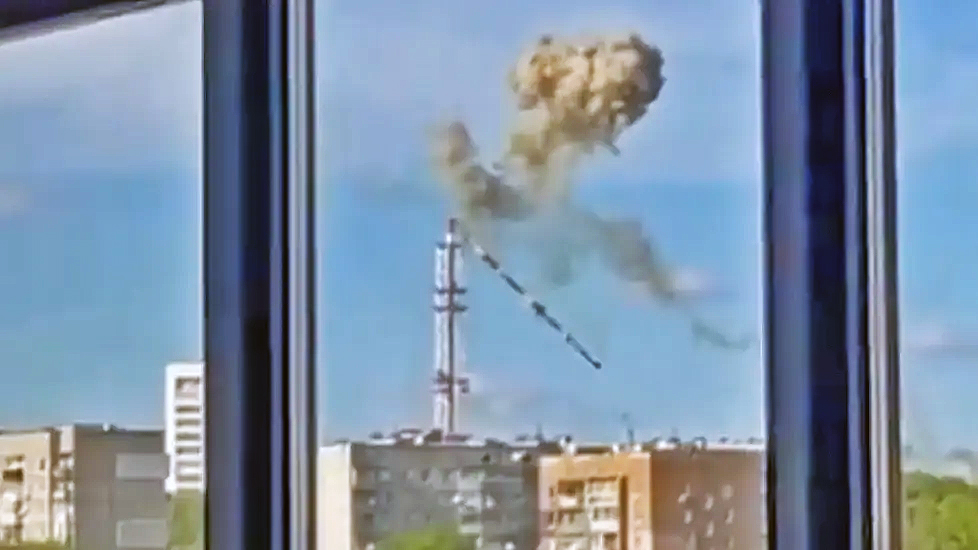Dramatic footage has emerged of the destruction of the huge TV tower in the Ukrainian city of Kharkiv, in the northeast of the country. The city, Ukraine’s second-largest, has come under fierce air attack in recent weeks, while the TV tower — the tallest of its kind in the region — was subject to another Russian strike, earlier in the conflict, after which it continued to operate.
Videos showing the attack on the TV tower this afternoon show a large cloud of smoke rising above it before the upper half of the tower topples and falls to the ground. According to local accounts, the tower was struck by “several Russian rockets” at around 4:35 p.m. local time, although it’s unclear if these were fired from the ground or aircraft. Some accounts, however, suggest that a Kh-59 series air-launched standoff missile was used.
According to regional head Oleh Syniehubov, there were no victims of the attack, with workers at the TV tower having been sheltering at the time of the strike. However, the TV signal, and reportedly also cell phone services, in the region have now been interrupted.
Standing 790 feet tall before today’s attack, the Kharkiv TV tower was built in 1981 and utilized a steel truss construction. It was primarily used for broadcasting on the TV and FM channels.
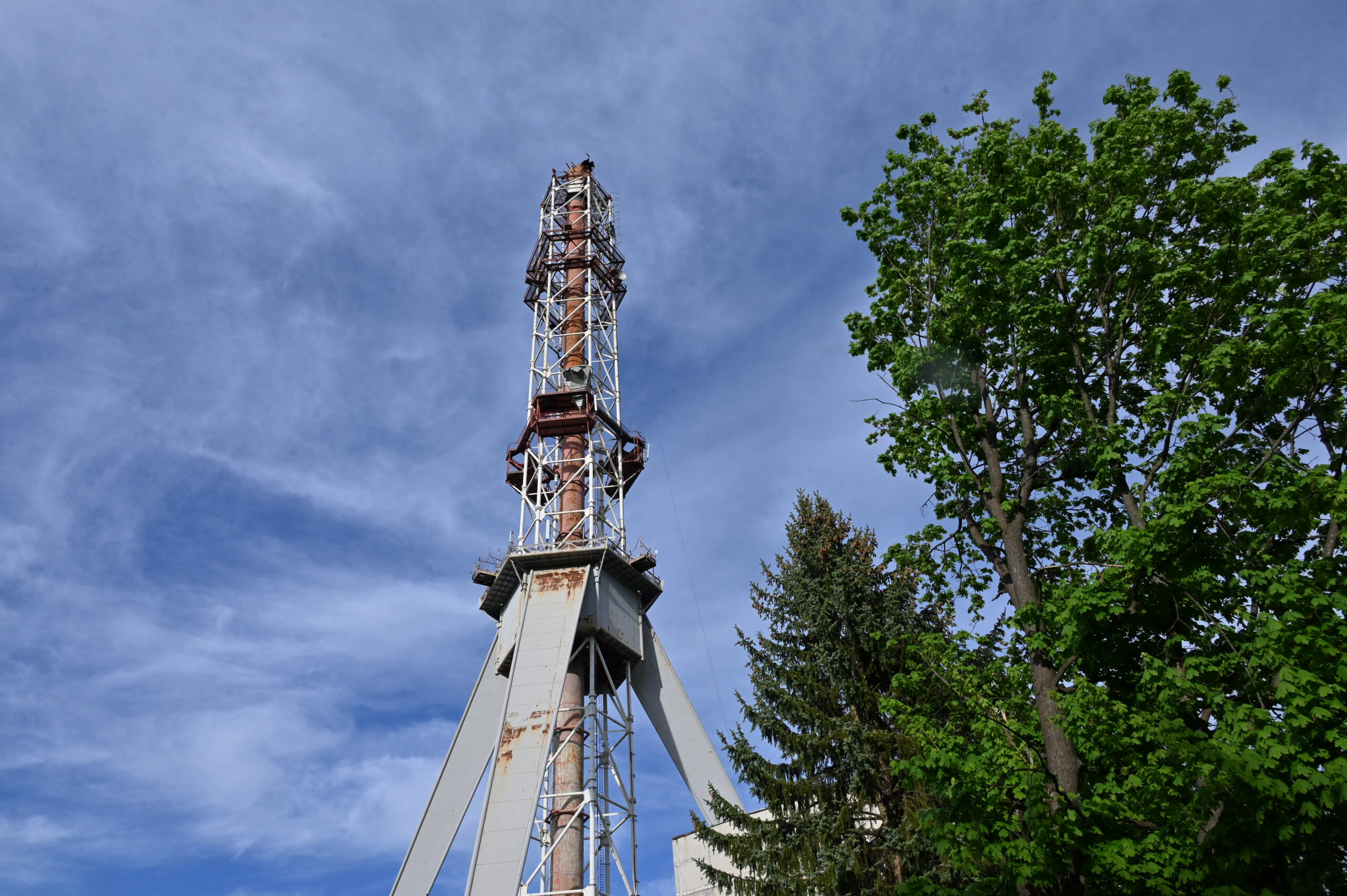
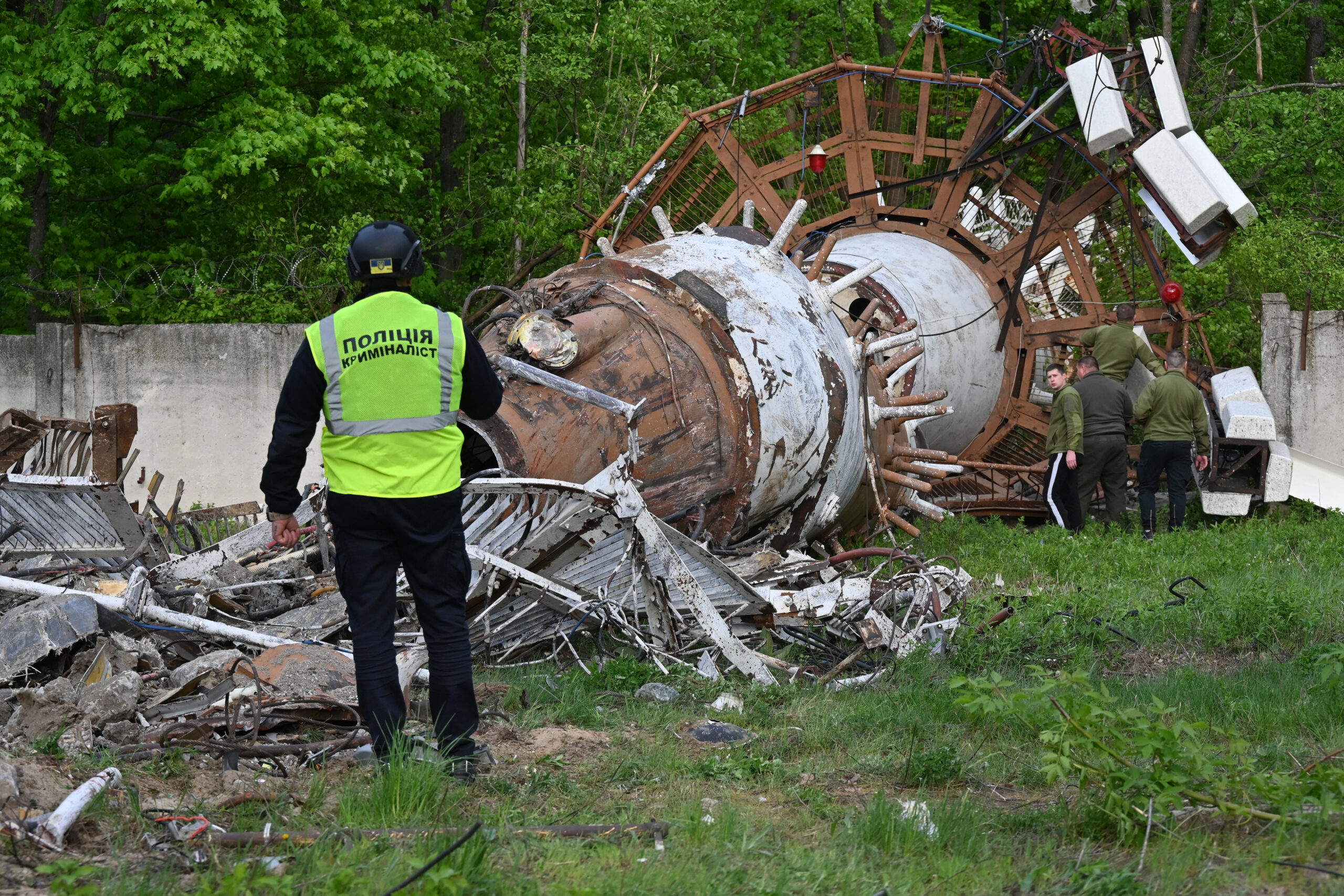
The tower came under Russian attack before, in the early days of the full-scale Russian invasion.
On March 6, 2022, during fierce fighting around Kharkiv, the tower as well as an administrative building were heavily damaged after reportedly being struck by eight 500-kilogram (1,102-pound) bombs dropped from Russian Su-34 Fullback combat jets.
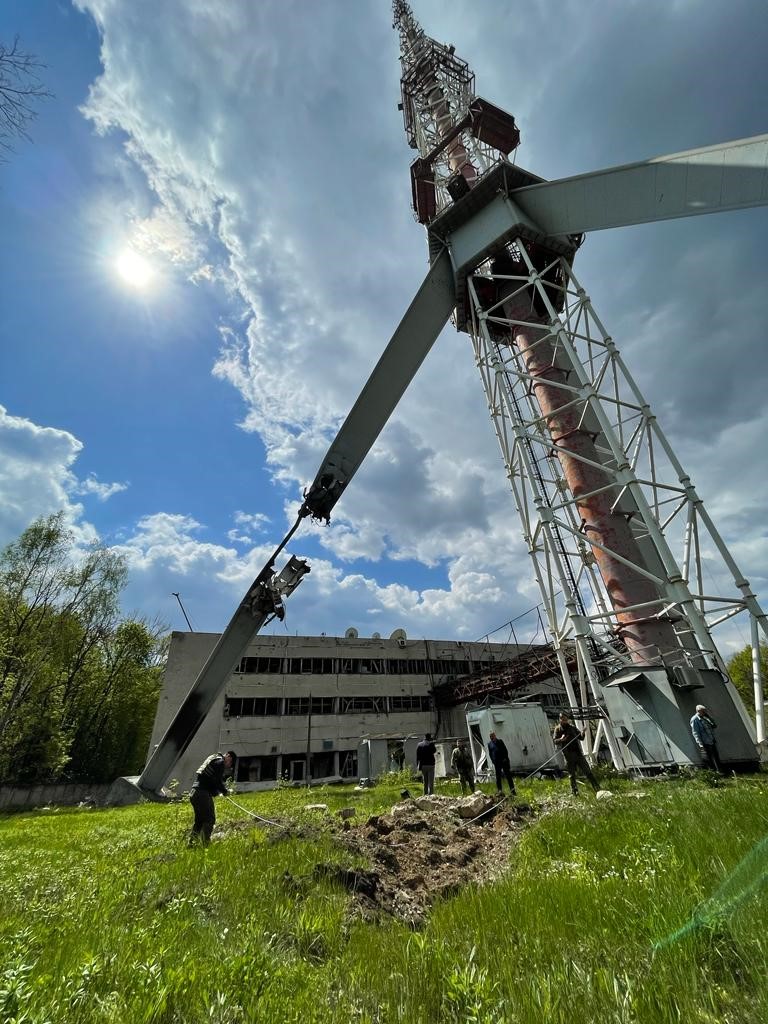
One of the jets in question was reportedly shot down by Ukrainian air defenses and its pilot ejected and was captured. He was later sentenced to 12 years in prison in Ukraine.
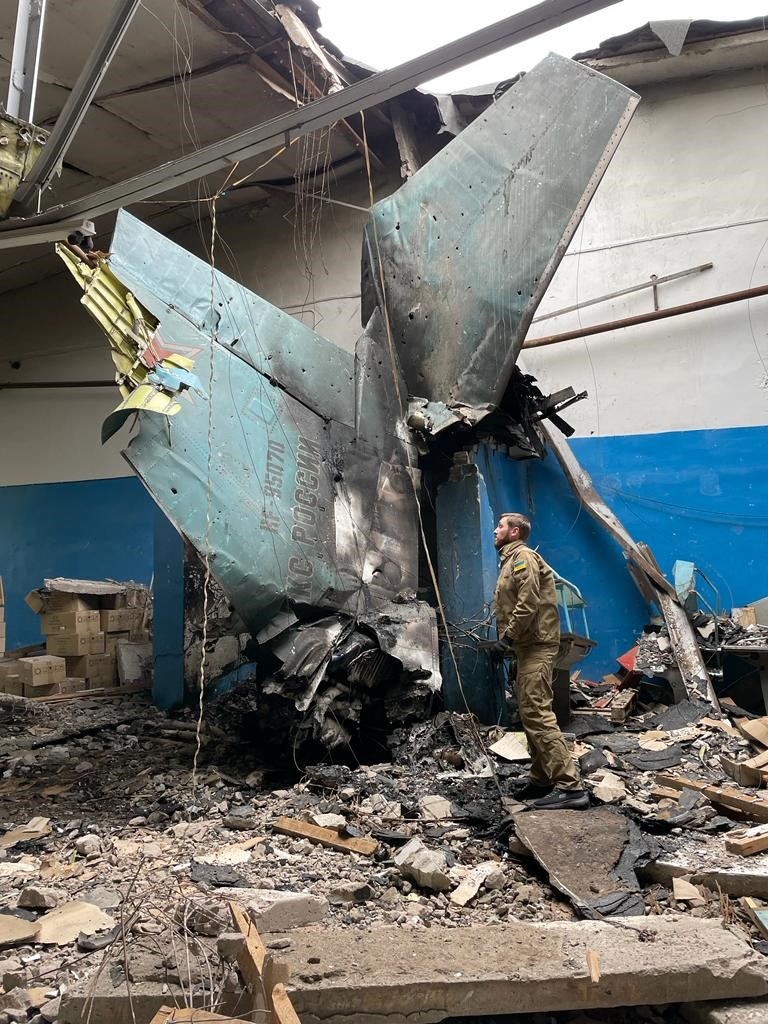
Since then, Kharkiv has come under intermittent Russian fire, but the ferocity of these attacks has stepped up considerably of late.
As part of its intense winter campaign of airstrikes, including drone and missile attacks, Kharkiv has been very much in the center of the Kremlin’s sights.
Located only 18 miles from the Russian border, the city is in a notably vulnerable position, especially as Ukraine’s air defenses become increasingly stretched.
“We have a catastrophic shortage of air defense systems,” Syniehubov told Reuters earlier this month. “Not only in the Kharkiv region but throughout the entire country. Especially in the Kharkiv region.”
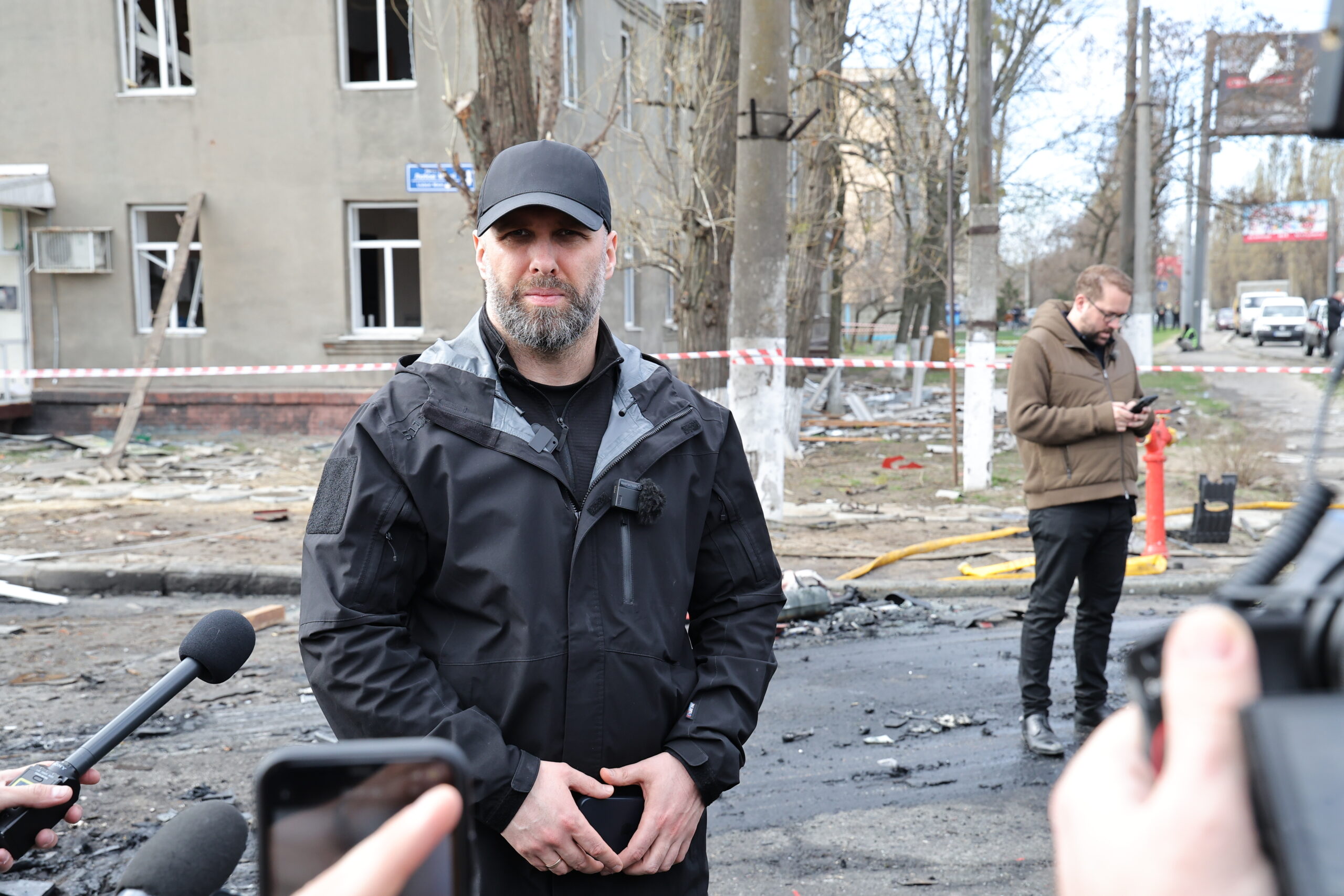
With the winter campaign targeting Ukraine’s energy infrastructure in particular, Russian raids have left hundreds of thousands of people in the wider Kharkiv region without power in recent weeks. Local officials have said that all of the power facilities in the region have been either damaged or destroyed.
Ukrainian President Volodymyr Zelensky has gone on record in recent weeks saying that almost a quarter of Kharkiv — home to 2 million people before the war — had been destroyed.
Clearly, the Russian winter campaign is intended, to a significant degree, to intimidate the civilian population of Ukraine. In this regard, Kharkiv is being particularly hard hit. While the TV tower, by its very nature supporting cellular and other line-of-sight communications, would have been used for military purposes too, its destruction is symbolic of the bombardment being meted out on the city and its residents.
Contact the author: thomas@thewarzone.com
